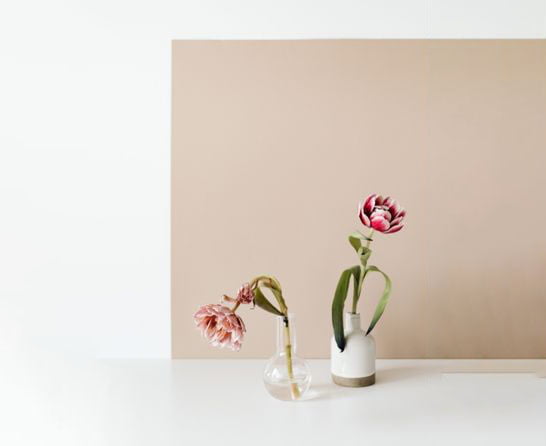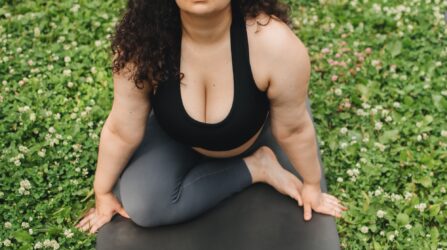
If facials aren’t already part of your beauty routine you need to stop what you’re doing and book one immediately. Having regular facials is a great way to:
With so many different facials out there it can be hard to know where to start but here are seven of the best facials that will give your skin the pick me up it needs and give you beautiful, glowing skin.
A radiofrequency facial stimulates the skin’s collagen production and is a great way to contour and tone your skin. The facial uses energy waves to heat the skin which helps soften fine lines, lift the cheeks and tighten the jawline. It’s pain free although you will feel some heat on your skin so if you suffer from rosacea or broken capillaries this treatment is not for you. As well as helping increase collagen production a radiofrequency facial helps boost oxygen levels in the skin, giving it that healthy glow. If you’re curious about radiofrequency facials and would like to know more you can find further information here and here.
Dermaplaning is the removal of the soft, fuzzy, hair we have on our faces. Removing this hair stops dirt or oil becoming trapped in it which can clog pores and lead to breakouts. By also removing any barriers on the skin, like hair, it allows products to penetrate the skin better meaning you’ll start to notice a difference to the overall health and appearance of your skin. Once you have a dermaplaning treatment you’ll notice your makeup sits on the face better, giving it an almost airbrushed appearance. Contrary to old wives tales, shaved hair won’t grow back thicker or darker, so rest assured that you won’t end up with a beard if you stop dermaplaning – not that you will want to once you see the results!
Most of us know the key to great skin is exfoliation and microdermabrasion is one of the best exfoliating treatments you can get! A microdermabrasion treatment uses fine crystals and a vacuum to slough away any old, dead skin, revealing younger, healthier skin underneath. This is a great anti ageing treatment that helps reduce any fine lines and wrinkles whilst simultaneously brightening tired, dull skin. It’s also great for helping treat acne scarring and evening skin tone. It might sound like it could be a bit harsh on your skin but your therapist can adjust the strength of the device so it can even be used on sensitive skin. You might want to book this treatment for when you don’t have any plans afterwards as you skin can be a little bit pink!
Acupuncture is an ancient form of Chinese medicine that uses very thin microneedles on various pressure points around the body. It can be used on the face and is a great non surgical answer to slowing down the ageing process. Acupuncture helps encourage the skin to produce collagen and elastin, essential for youthful looking skin. It’s also great for increasing oxygen levels which prevents your skin from becoming puffy and tired looking. It is painless and can be tailored to each individual making sure the treatment is suited exactly to your skin needs and desires.
An LED facial (also sometimes called a colour therapy facial) uses four wavelengths of UV free LED lights to help rejuvenate your skin. A treatment is usually administered via a mask and can be added as part of other facial treatments as an additional extra or be used as a standalone treatment. The different wavelengths target different areas of the skin by sending energy into the cells to stimulate different responses. For example:
LED facials are pain free and suitable for all skin types. If you’re feeling flush and have a spare £350 to spend on your own mask, it can also be done at home as part of your normal skincare routine.
Extractions are a normal part of most facials but if you have larger pores that clog easily you might need a facial that focuses solely on extractions. During an extraction facial your therapist will remove dirt, oil and excess sebum from your pores, extracting both blackheads and whiteheads. They will start the facial using steam to open your pores and soften your skin so extractions are as pain free as possible. Most extraction facials will follow up with a cooling, soothing mask. You might find you’re a bit red afterwards and depending on how deep your extractions are your skin also may be a bit tender to touch.
The HydraFacial has become increasingly popular in recent years and with good reason. One of the best facials for detoxifying and deep cleansing your skin, the HydraFacial follows six steps. They are:
Using advanced technology this facial removes any dead skin cells and impurities then hydrates the skin with antioxidants and peptides. The results are refreshed, hydrated skin that all skin types can enjoy.
When you’re deciding what facial is right for you, think about your skin’s needs; is it acne prone, dry, oily or do you want to reduce the signs of ageing? Think about your problem areas and the results you want to see and choose a facial according to this.
Everyone can benefit from a regular facial, even if it’s just a simple classic facial once a month. Find a therapist who can get to know your skin and help you achieve the healthiest skin possible.

-


Dr Singh is the Medical Director of the Indiana Sleep Center. His research and clinical practice focuses on the myriad of sleep.

Understanding the female libido Before we can answer, “Does progesterone increase sex drive?” it’s important to gain a better understanding of what a “sex drive” means. The female libido or sex drive is how much you desire sexual activity. Every

Why am I so hungry before my period? Women who experience an increased appetite before period starts can feel frustrated that they’re craving foods they don’t normally eat. You may be wondering, “Why do I eat so much before my

Understanding cycle syncing workouts Did you know that evidence shows a link between the impact of exercise and menstrual cycle phases in women? It’s true. Women are at a higher risk of foot and ankle injury during workouts than men,
Hormona© 2025, All Rights Reserved
| Cookie | Duration | Description |
|---|---|---|
| cookielawinfo-checkbox-analytics | 11 months | This cookie is set by GDPR Cookie Consent plugin. The cookie is used to store the user consent for the cookies in the category "Analytics". |
| cookielawinfo-checkbox-functional | 11 months | The cookie is set by GDPR cookie consent to record the user consent for the cookies in the category "Functional". |
| cookielawinfo-checkbox-necessary | 11 months | This cookie is set by GDPR Cookie Consent plugin. The cookies is used to store the user consent for the cookies in the category "Necessary". |
| cookielawinfo-checkbox-others | 11 months | This cookie is set by GDPR Cookie Consent plugin. The cookie is used to store the user consent for the cookies in the category "Other. |
| cookielawinfo-checkbox-performance | 11 months | This cookie is set by GDPR Cookie Consent plugin. The cookie is used to store the user consent for the cookies in the category "Performance". |
| viewed_cookie_policy | 11 months | The cookie is set by the GDPR Cookie Consent plugin and is used to store whether or not user has consented to the use of cookies. It does not store any personal data. |
